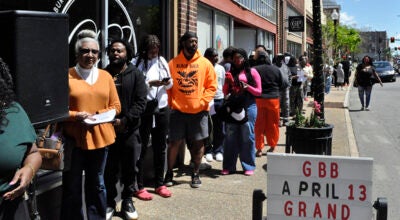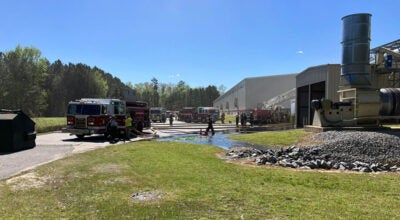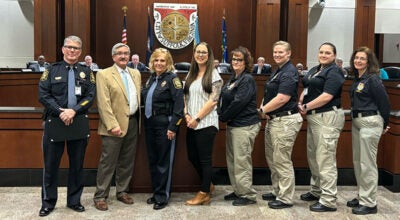Weaving a recovery
Published 9:20 pm Saturday, July 17, 2010
Stroke, heart attack and hand surgery might seem to have wildly different recovery regimens. But there’s a surprising activity that can benefit patients recovering from all three events.
Weaving.
Weaving, while not as popular today, was used in World War II as a therapy for injured soldiers and can help increase dexterity in the hands, while keeping the mind active through a detailed, but repetitive process.
Those who practice weaving swear by it.
“After my surgery, I told my doctors I was a weaver, and they were thrilled,” said Mary Scott. “It used to be used as therapy for wounded soldiers in World War II and to treat post-traumatic stress disorders. It helps keep your mind off your aches and pains and keep you thinking.”
For more than 20 years, Scott has been weaving, a pastime she picked up to help her children with a 4-H project.
Now, she is co-authoring a book on the subject, demonstrates at many local and state events and teaches classes at the Suffolk Center for the Cultural Arts, where she has seen it do wonders for some of her students — from hyper-active and attention deficit disorder children who are able focus and become entranced by the loom, to an Army veteran who uses it to de-stress and keep her active.
“It’s a full-body activity,” Scott said. “It’s not just sitting. You have to get up and move around a lot. It’s not too taxing, but involves enough activity that you don’t become stiff.”
Scott has undergone three hand and arm surgeries since she started weaving, and each time her pastime has helped her regain mobility in her hands.
“During my last surgery, I actually talked to my doctor about it and did my own therapy,” Scott said. “I knew most of the techniques from my other surgeries and was able to supplement it with my weaving. I recovered so quickly, they were thrilled.”
While its physical benefits are proven and doctors encourage patients to take up the trade and others like it, Scott said because it’s so involved it can also help keep your mind off any pain.
“People often need a diversion and something to center them,” Scott said. “Its not just about physical rehab, but it can help people feel good about themselves, too.”
Ellie Cline is a student of Scott’s who retired from the Army after 36 years a few years ago.
Through rain, snow or a backed-up tunnel, she comes to weaving classes every week.
“I always wanted to do something with my hands,” Cline said. “People need to feel that kind of satisfaction knowing you’ve made something.”
Cline’s first project was a jacket.
Scott’s other students have made everything from lace to placemats.
“It’s amazing to see what people can do,” Scott said. “It doesn’t matter what stage you’re at, you can weave. For me, I sit down at the loom and it all goes away.”





